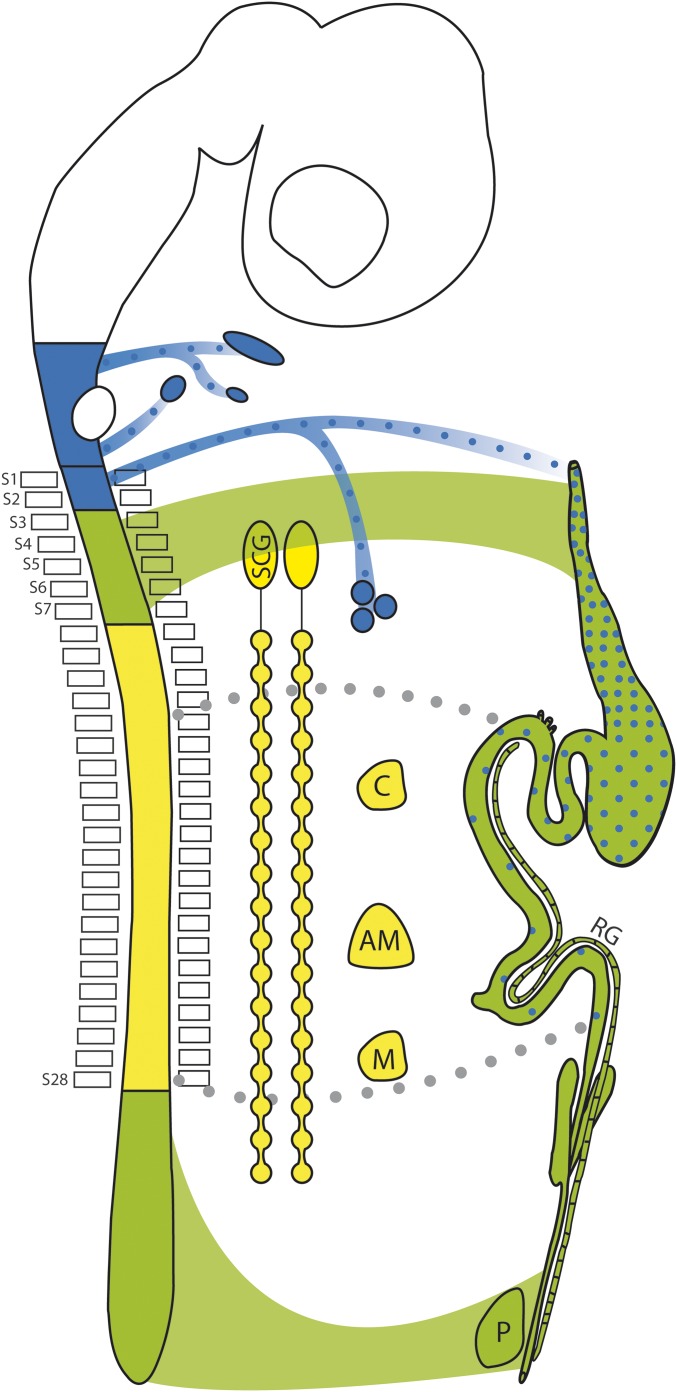Fig. 5.
Rostro-caudal levels of the neural crest contribution to the ENS. Schematic of the central and autonomic nervous systems of a tetrapod showing the three types of neural crest cells that can be distinguished according to their fates: (i) sympathetic and sympathoadrenal (yellow) from somite 8–28, that contributes to most para- and prevertebral sympathetic ganglia (C: celiac; M: mesenteric) and the adrenal medulla (AM); (ii) sympatho-enteric (green) from somite 3–7 and caudal to somite 28, that contributes to the superior cervical ganglion (SCG) and forms the pelvic ganglion (P) [as well as the ganglion of Remak in chicken (RG)], and most of the ENS; and (iii) parasympatho-enteric (blue), from preotic levels to somite 2, that forms parasympathetic ganglia and contributes to the foregut nervous system. Gray dots represent postnatal contribution of Schwann cell precursors of enteric extrinsic nerves to the ENS (36).

